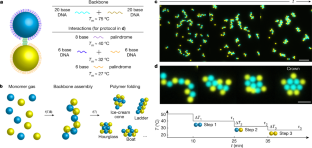非分解性プラスチックと温室効果ガス排出を削減できる方法 Method could reduce nondegradable plastics and greenhouse gas emissions
2022-09-28 テキサス A&M大学
チームは、約2年間にわたり、CO2を原料としてバクテリアが栄養溶液の中で増殖し、バイオプラスチックを生産する統合システムを開発した。
最初のユニットでは、電気を使って二酸化炭素をエタノールなどの炭素2つの分子に変換する(電極触媒作用と呼ばれるプロセス)。2番目のユニットでは、バクテリアがエタノールと炭素分子を消費して、石油由来のプラスチックポリマーとは異なる、分解されにくいバイオプラスチックを生産する機械になる。
プロセス中のCO2を利用することで、温室効果ガスの排出量も削減できる可能性がある。
<関連情報>
- https://agrilifetoday.tamu.edu/2022/09/28/texas-am-agrilife-develops-system-to-create-bioplastics/
- https://www.cell.com/chem/fulltext/S2451-9294(22)00478-8
統合システムによるCO2のバイオプラスチックへの迅速変換のためのケム・バイオインターフェースデザイン Chem-Bio interface design for rapid conversion of CO2 to bioplastics in an integrated system
Peng Zhang,Kainan Chen,Bing Xu,Cheng Hu,Joshua S. Yuan,Susie Y. Dai
Chem Published:September 28, 2022
DOI:https://doi.org/10.1016/j.chempr.2022.09.005

Highlights
•CO2 conversion via EMC2 intermediate
•Soluble C2 intermediates play critical roles in the efficient integration
•Systematic design enables continuous and rapid conversion of CO2 to bioproducts
•EMC2 produces PHA with substantially improved productivity and product chain length
The bigger picture
The research uniquely addresses two daunting challenges our generation faces: global climate change and plastic waste accumulation. We demonstrated an efficient route for converting CO2 to biodegradable plastics via a systematic design of electrocatalysis, chemical-biological interface, and microbes. The integration of chemical and biological conversions must overcome the intermediate incompatibility, the harsh chemical catalysis conditions, and the inefficient mass, energy, and electron transfers. This study overcomes these critical challenges by exploiting the soluble two-carbon molecules as intermediates from electrocatalytic CO2 reduction to bioconversion. These intermediates are better carriers for electrons and energy, facilitate mass transfer, and can readily enter primary metabolism as building blocks for bioproduction. Moreover, the systematic design achieved integrated, continuous, and rapid microbial biomass and PHA production from CO2 with record-level productivity.
Summary
Integrating catalytic CO2 reduction with bioconversion could substantially advance carbon capture and utilization and mitigate climate change. However, the state-of-the-arts are limited by inefficient electron and mass transfers, unfavorable metabolic kinetics, and inadequate molecular building blocks. We overcome these barriers with the systematic design of electrocatalysis, chemical-biological interface, and microorganisms to enable efficient electro-microbial conversion with C2 (EMC2) intermediates. The soluble C2 intermediates can facilitate rapid mass transfer, readily enter primary metabolism, have less toxicity, carry more energy and electrons, and serve as better molecular building blocks for many microorganisms. The multi-tier Chem-Bio interface design delivered the EMC2 system to achieve 6 and 8 times increase of microbial biomass productivity compared to C1 intermediate and hydrogen-driven routes, respectively. The multi-module synthetic biology design produced medium-chain-length polyhydroxyalkanoates (PHAs), biodegradable polymers, representing much higher productivity and molecular chain length than the platforms based on C1 intermediates, hydrogen, or electrons.



